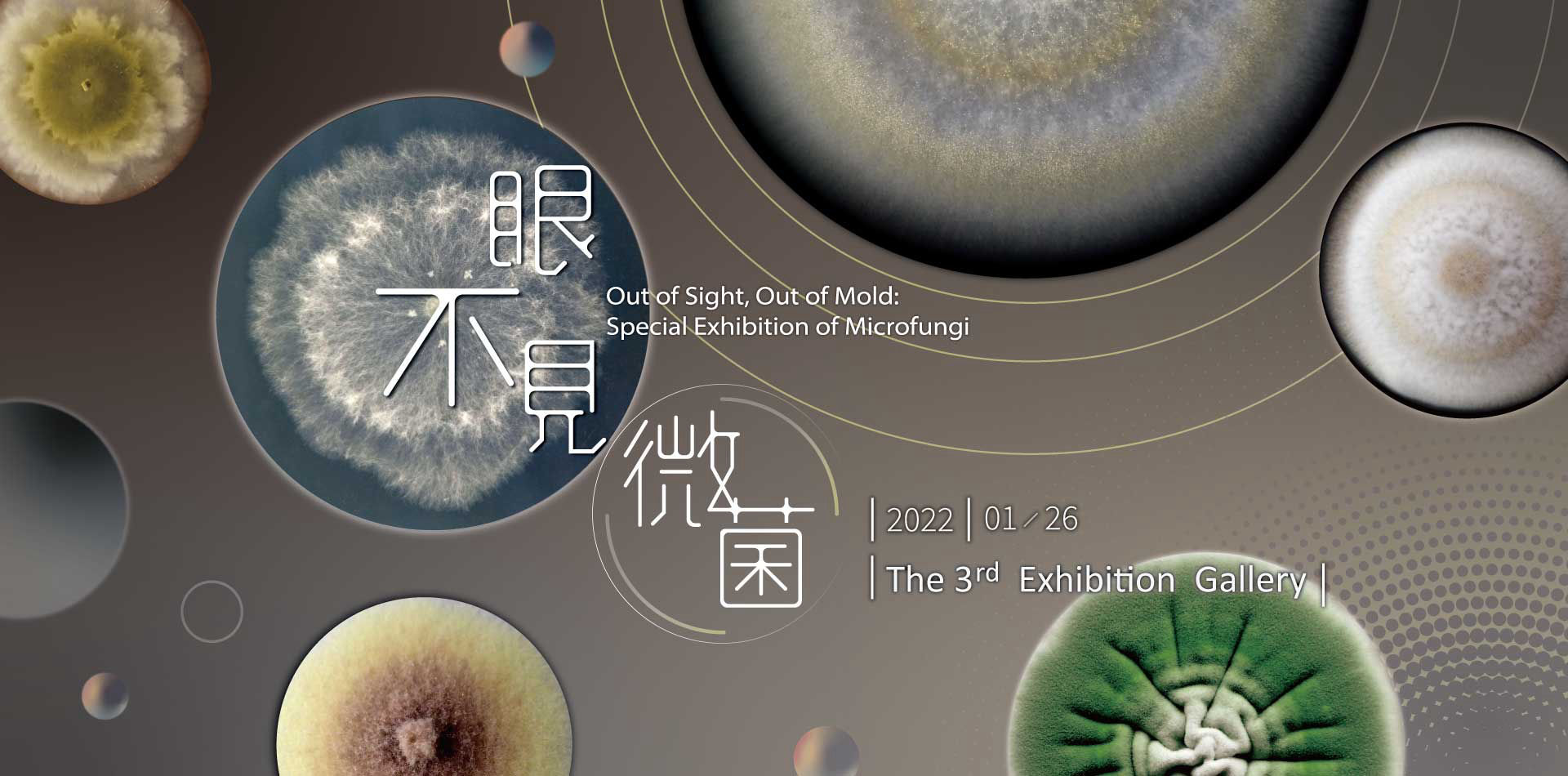

We often think that clean means no dirt or germ. But is that a proper definition? Microbes are all around us, such as bacteria, viruses, fungi, and algae. They are invisible to the naked eye. The focus of this special exhibition is on the “Microfungi.”
In this exhibition, gain insight into the characteristics of the Fungi and microfungi. Understand the relationships of microfungi with plants, animals, and other organisms in the ecosystem through endophytic fungi, mycorrhizal fungi, phytopathogenic fungi, lichens, and entomopathogenic fungi, in addition through various microfungi-related products that we use in our daily lives, explore the close relationship between microfungi and humans. Finally, learn how fungi are discovered, preserved, and studied in the laboratories of the National Museum of Natural Science.
Fungi are unique organisms. While they are immobile like plants, they are more closely related to animals. They are decomposers in various ecosystems and play important roles in our daily lives. Fungi vary widely in terms of shape and size. For example, the mushrooms we commonly see are the fruiting bodies of macrofungi. Other examples include wood ears, truffles, bamboo mushrooms, morels, and those invisible microfungi. There are about 150,000 known species of fungi. In 1991, mycologists estimated that 1.5 million species exist worldwide. With advancements in environmental DNA sampling techniques, as of 2019 that estimate was increased to 12 million.
Microfungi are fungi that cannot be identified or seen with the naked eye and do not produce large fruiting bodies. Microscopes are required to observe their structures. As such, their presence often goes undetected. To date, there are around 4,500 known genera and 56,000 known species.
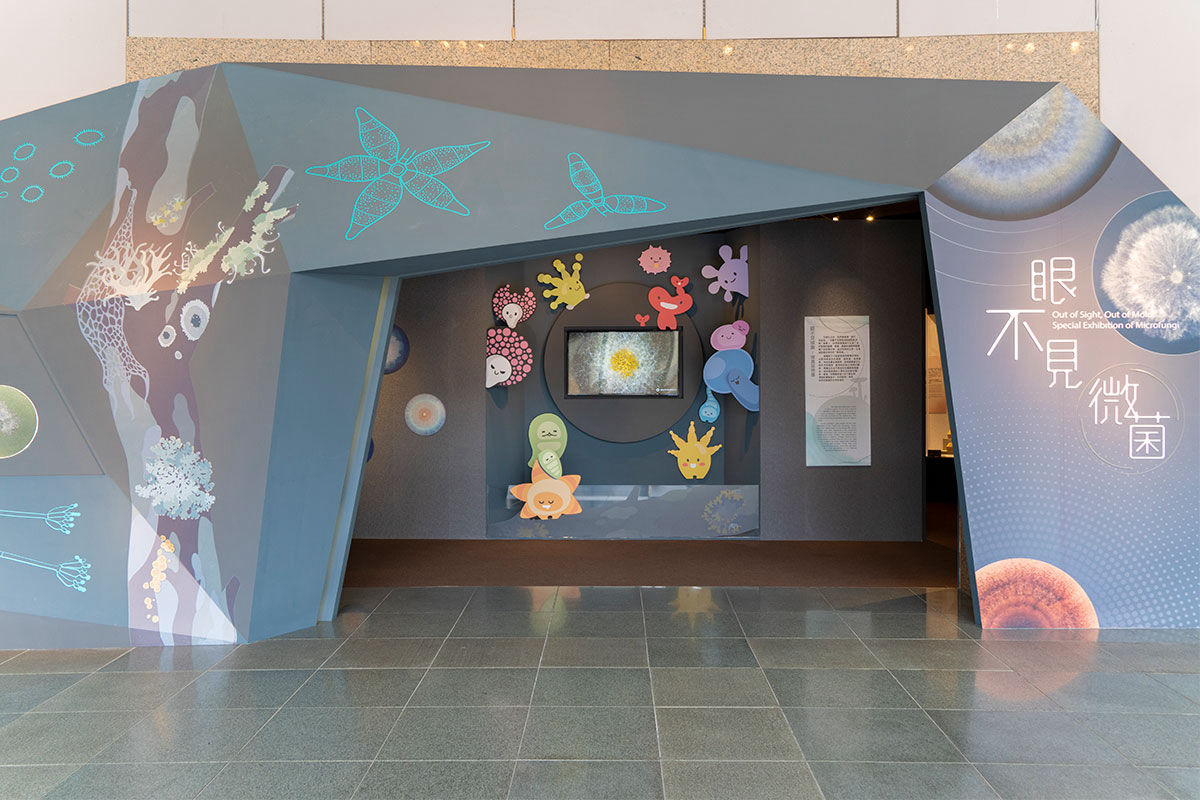
Some microfungi are free-living organisms, and some form symbiotic relationships with other organisms. Symbiosis refers to an interaction in which two or more species living closely together for all or part of their lifetimes. Such interaction can be mutualistic or parasitic.
Endophytic fungi in plant tissues and mycorrhizal fungi in roots are symbiotic with plants. In addition to exchanging nutrients, mycorrhizal fungi and other microorganisms in the soil form an extensive underground wood wide web for transmission of nutrients and chemical signals among plants. However, phytopathogenic fungi may cause plant disease.
Lichens are symbionts of fungi and algae or cyanobacteria. They are often seen on tree trunks or rocks. Based on their growth forms, they can be divided into crustose, foliose, and fruticose lichens. The scientific name of a lichen is the same as that of its mycobiont.
Entomopathogenic fungi are parasitic on insects. When fungal spores in the air land on an insect, fungal hyphae enter and occupy the insect’s body, and then cause the death of the host. Due to their lethal effects on insects, they are used for the biological control of pests. Examples include Metarhizium species and Beauveria species.
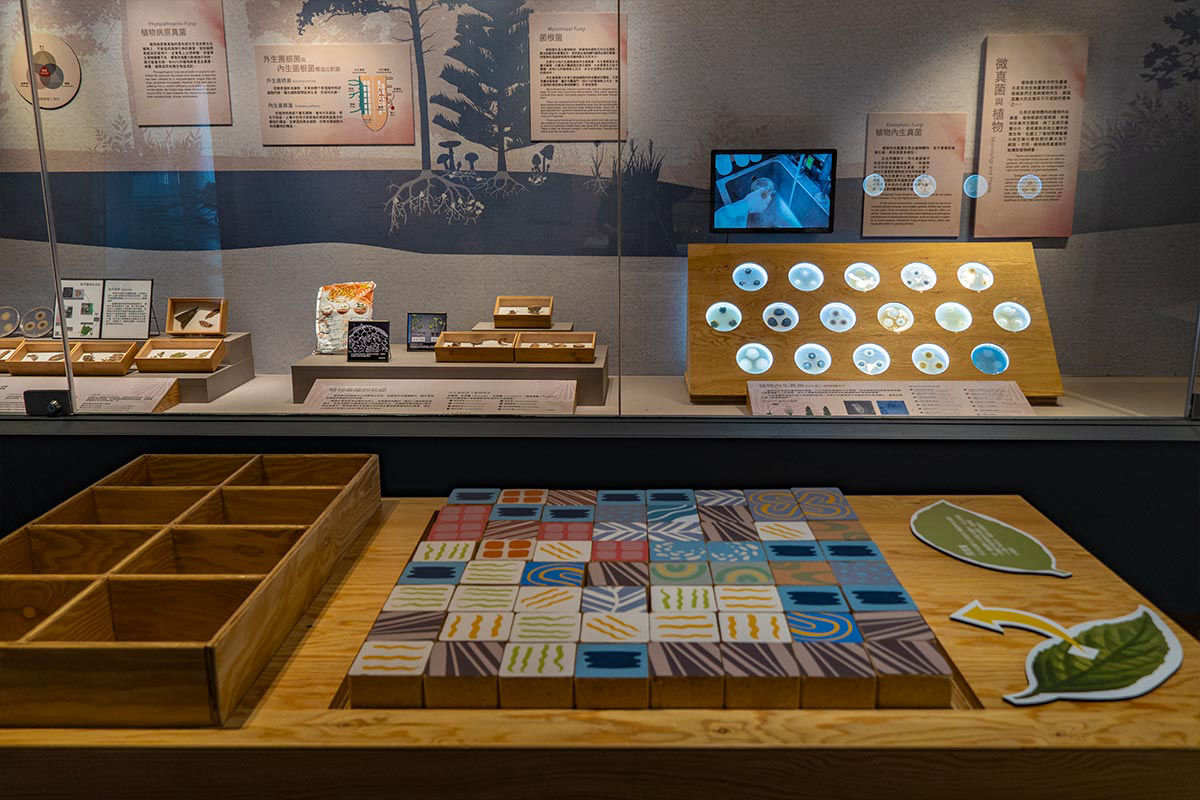
Microfungi are neither “good” nor “bad”. Only when they interact with us, the environment, or other organisms and matters, they have either positive or negative impacts. Our life has greatly benefited from some microfungi, such as those used to produce foods, daily necessities, antibiotics, medicines, and dietary supplements. However, moldy food, mycotoxins, and fungal infections can adversely affect human health.
Brewing and winemaking techniques, flour-based foods eaten in the East and the West, seasonings and condiments, and fermented foods all involve the use of microfungi. However, microfungi could also be notorious in some way. Food that is moldy or that contains mycotoxins can cause illness.
Some microfungi can cause illness or health issues, while others can save lives. Common skin diseases are the result of fungal infections. However, penicillin used to treat bacterial infections and Taxol used to treat cancers, immunosuppressants taken after organ transplantation, and some dietary supplements are produced with microfungi.
Fungi prefer hot damp environments. Taiwan’s climate is warm and humid. Especially during the rainy season, clothing, books, and wood furniture can become moldy. Moreover, mildew can build up in the corners and crevices of bathrooms and kitchens. If not eliminated, they can trigger allergies or respiratory diseases. Keeping your home well ventilated, dry, and clean is important for preventing mold and mildew.
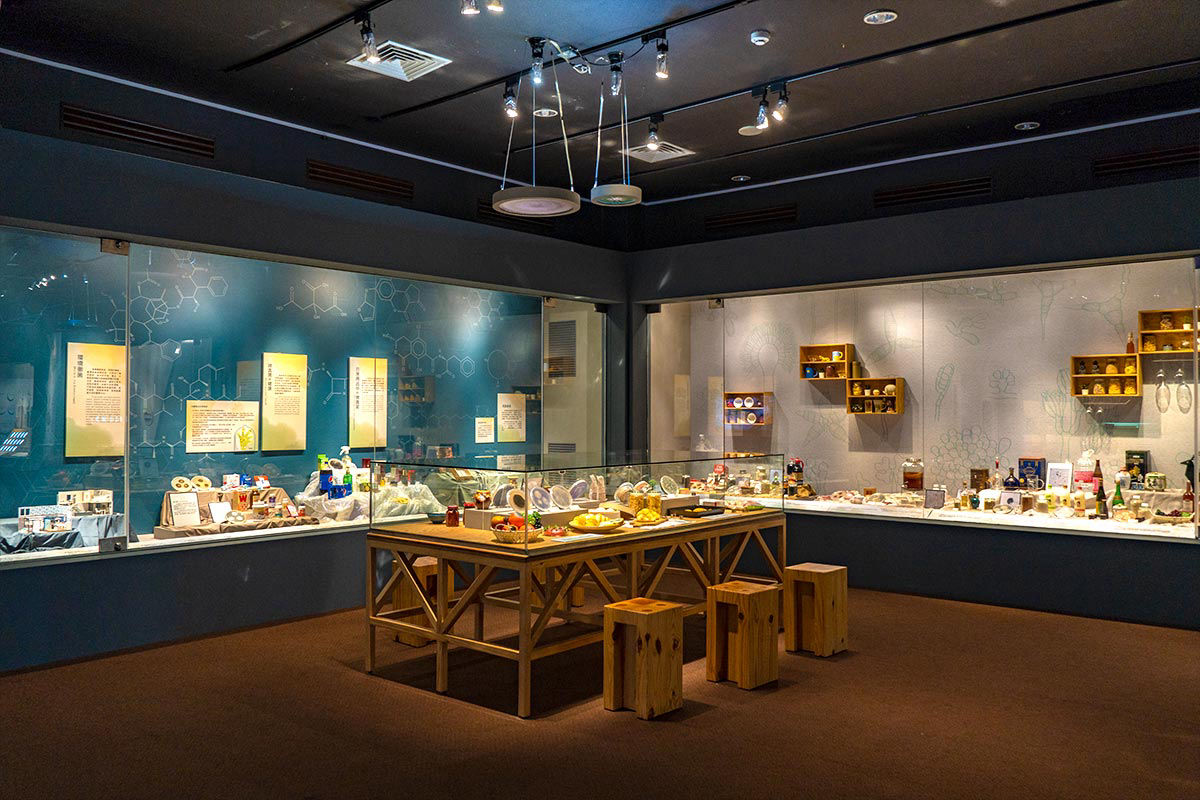
Fungal culture preservation makes living fungi available for future research. The National Museum of Natural Science not only holds a collection of dried inactive fungal specimens in the mycological herbarium, but also maintains an active fungal culture collection. Currently, more than 3,000 cultures of fungi have been preserved, some for more than 30 years.
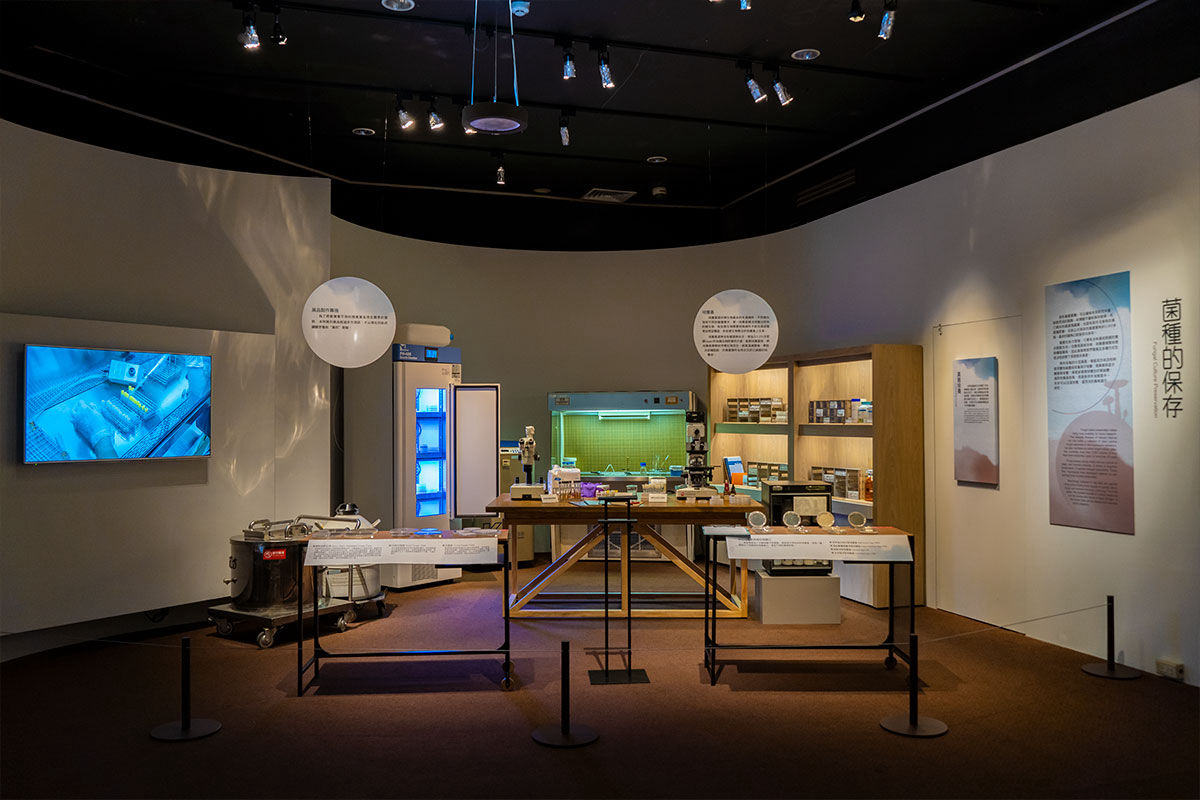

The 3rd Exhibition Gallery
Jan. 26, 2022 - Nov. 27, 2022